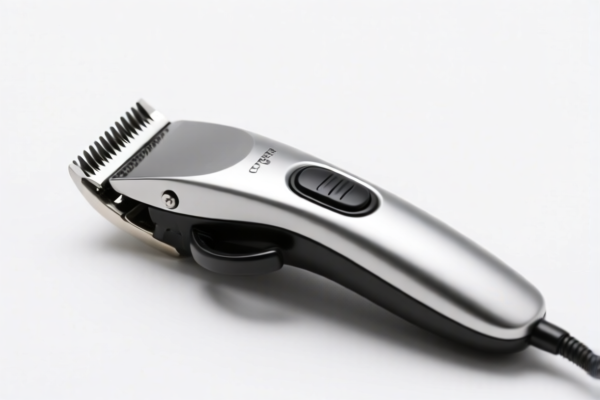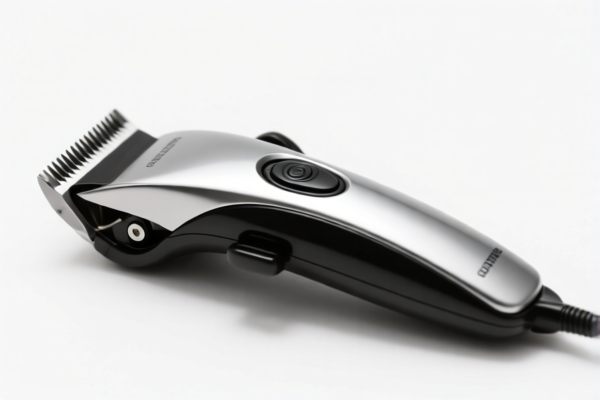| HS Code | Official Doc | Tariff Rate | Origin | Destination | Effective Date |
|---|---|---|---|---|---|
| 8214909000 | Doc | 1.4¢ each + 3.2%+30.0% | CN | US | 2025-05-12 |
| 8214906000 | Doc | 0.2¢ each + 3.1%+30.0% | CN | US | 2025-05-12 |
| 3926903000 | Doc | 59.2% | CN | US | 2025-05-12 |
| 3926909989 | Doc | 42.8% | CN | US | 2025-05-12 |
| 3921904010 | Doc | 34.2% | CN | US | 2025-05-12 |
| 3921904090 | Doc | 34.2% | CN | US | 2025-05-12 |




Clipper Guards
Clipper guards are attachments used with hair clippers to control the length of hair left on the head or body during a haircut. They function by creating a consistent space between the clipper blades and the hair being cut, resulting in an even trim.
Material
Clipper guards are most commonly made from:
- Plastic: Typically ABS plastic, offering a balance of durability, flexibility, and cost-effectiveness.
- Metal: Stainless steel guards are more durable, easier to sanitize, and provide a smoother cutting experience, but are generally more expensive.
- Carbon Fiber: Lightweight and strong, offering premium performance and heat resistance.
Purpose
The primary purpose of clipper guards is to achieve uniform hair length during haircuts. They facilitate a variety of styles and fades, allowing for precision and control. They are used by professional barbers, stylists, and individuals for self-haircuts.
Function
A clipper guard snaps or slides onto the clipper blade housing. The guard has teeth that lift the hair away from the skin before it is cut by the blade. The length of the teeth determines the length of hair remaining. Shorter teeth result in a shorter cut, while longer teeth leave more hair.
Usage Scenarios
- Haircuts: Achieving desired hair length and styles (e.g., fades, tapers, layered cuts).
- Beard Trimming: Maintaining beard length and shape.
- Body Grooming: Trimming body hair to a consistent length.
- Personal Grooming: Self-haircuts and touch-ups at home.
Common Types (Guard Sizes)
Clipper guard sizes are typically numbered, with each number corresponding to a specific hair length. The numbering system can vary slightly between manufacturers, but the following is a common standard:
- #0 (1/16 inch / 1.5mm): Very close cut, often used for outlining or creating a shaved look.
- #1 (1/8 inch / 3mm): Short cut, often used for fades or short hairstyles.
- #2 (1/4 inch / 6mm): Slightly longer than #1, suitable for short to medium hairstyles.
- #3 (3/8 inch / 9mm): Medium length, often used for general haircuts.
- #4 (1/2 inch / 13mm): Medium-long length, commonly used for longer hairstyles or maintaining beard length.
- #5 (5/8 inch / 16mm): Longer length, suitable for longer haircuts or beard styles.
- #6 (3/4 inch / 19mm): Even longer length.
- #7 (7/8 inch / 22mm): Longest commonly used guard size.
- #8 (1 inch / 25mm): Very long length, used for longer styles.
Beyond standard sizes, there are also:
- Taper Guards: Designed for creating gradual fades.
- Left/Right Guards: Specifically shaped for precise work on the sides of the head.
- Magnetic Guards: Used with clippers that have magnetic blade attachments.
Clipper guards are tools used for working in the hand, often associated with hair cutting or grooming. Based on the provided information, the following HS codes may be relevant:
-
8467990190: This HS code covers “Tools for working in the hand, pneumatic, hydraulic or with self-contained electric or nonelectric motor, and parts thereof: Parts: Other Other”. This is a broad category encompassing various hand tools and their components. Clipper guards, as parts of hair-cutting tools, could fall under this classification. The basic tariff is 0.0%, with an additional tariff of 25.0% currently, increasing to 30.0% after April 2, 2025, resulting in a total tariff of 55.0%.
-
3926903000: This HS code refers to “Other articles of plastics and articles of other materials of headings 3901 to 3914: Other: Parts for yachts or pleasure boats of heading 8903; parts of canoes, racing shells, pneumatic craft and pleasure boats which are not of a type designed to be principally used with motors or sails”. If the clipper guards are made of plastic and are components for pleasure boats (though this is less likely), this code could apply. The basic tariff is 4.2%, with an additional tariff of 25.0% currently, increasing to 30.0% after April 2, 2025, resulting in a total tariff of 59.2%.
-
3926909989: This HS code covers “Other articles of plastics and articles of other materials of headings 3901 to 3914: Other: Other Other”. If the clipper guards are made of plastic and do not fall into more specific categories, this code could be applicable. The basic tariff is 5.3%, with an additional tariff of 7.5% currently, increasing to 30.0% after April 2, 2025, resulting in a total tariff of 42.8%.
According to the provided reference material, the HS code options related to 'clipper guards' are limited, with only the following 3 found. It is important to determine the material composition of the clipper guards to accurately classify them. If they are made of plastic, either 3926903000 or 3926909989 may be applicable, depending on their specific use. If they are components of a broader tool set, 8467990190 is the most likely classification.
Customer Reviews
No reviews yet.